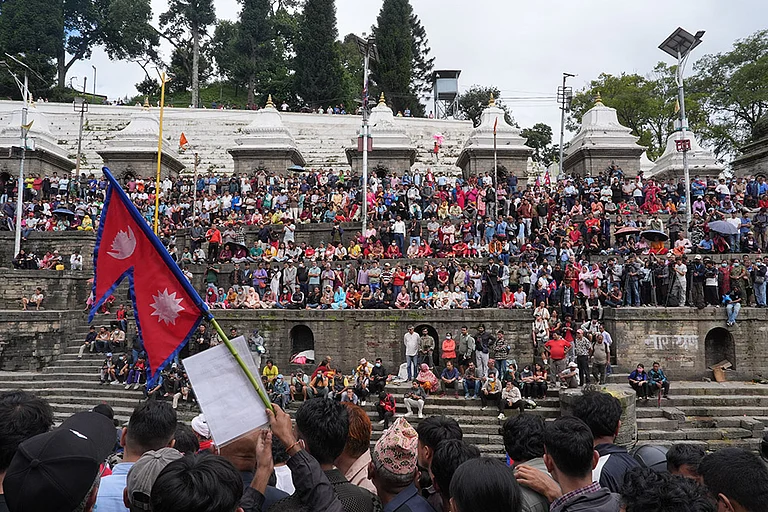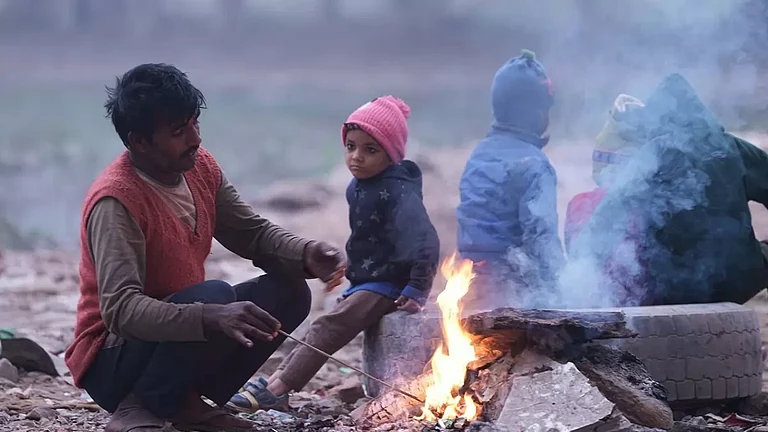Every year, before the onset of the monsoon, people in Goa await a unique fair called the Purumenthachem Fest. Held in Panaji and Margao respectively, these two popular fairs still carry the legacy of what was once an essential pre-monsoon activity in households across Goa. “Just before monsoon, while the sun was still strong, my grandmother would get busy stocking up on various kinds of food items,” recalls Goa-based marketing and events professional Nupura Hautamaki. “As kids, we watched in awe as grandma seemed to be everywhere – pickling the mangoes, drying the fish, making sausages, putting away everything in pots and jars.”
“It was the same everywhere across Goa,” adds Hautamaki. “This was ‘purumenth’, the food stock that would sustain every Goan family through the monsoon.
Located on the western coast of India, Goa receives heavy rainfall from the south-west monsoon, usually between June and September. Today, it is one of the most popular, round-the-year tourist destinations of India. But, even a few decades ago, life would almost come to a standstill during the monsoon. Roads would be flooded, transportation would be limited, shops would shut down – and one of Goa’s main food items, fresh fish, would be in short supply as fishermen did not venture out to the sea during the rainy season.
Purumenth (also purument or purmenth) is an old custom practised in Goa, where people procured different kinds of food, processed them and stored them in a suitable manner so that they lasted through the monsoon season. Despite the inclement weather, Goans would continue to enjoy their elaborate meals and snacks at home. It is a Konkani word, derived from the Portuguese word for provisions (provimento / provisao). Recall, Goa was a Portuguese colony between 1510 and 1961.
According to historian Fátima da Silva Gracias, author of Cozinha de Goa: History and Tradition of Goan Food, the preparation actually started from February and continued till mid-May. The food items had to be cleaned, sun-dried, pickled, fermented (or suitably preserved) to ensure a long shelf life. At this time, refrigeration was not known to people. And since they could not go out, a lot of planning was required, she says. Paddy had to be boiled and de-husked in the mill. Even wood had to be stocked. People who lived in large houses would have separate rooms to stock their food. Dried or pickled mangoes, jackfruits (the seeds were dried to be used in curries), coconut and coconut oil, kokum, tamarind, seasonal vegetables, beans, pulses, vinegar, salt, spices, cashew nuts, feni, and many other food items were part of purumenth.

Fish is an important part of Goan diet. Since the monsoon did not allow fishermen to go out to the sea, drying the fish (mackerel, bombil, etc.) for later consumption was an important part of purumenth. “Before Goan beaches became a tourist spot, people would dry the fish on the beach,” says Miguel Braganza, who actively promotes organic agriculture. “So, before monsoon set in, everyone would visit the weekly markets to buy food, including fish, that they would process at home,” says Braganza. “You would have fish from Anjuna, salt from Arpora, and so on, at these weekly markets. Before Goan beaches became a tourist spot, people would dry the fish on the beach,” Braganza adds.
The Goa sausage, which is a highly sought-after product, was an important part of purumenth for many. Basically, the meat would be cured with salt for two to three days, cut into pieces, mixed with spices and toddy vinegar. After being stuffed into guts, they would be smoked – hung over the fireplace to dry.

Clyde D’Souza, in his book Susegad: The Goan Art of Contentment, mentions how, every year “from March onwards, backyards became drying grounds filled with a variety of food items – mango and jackfruit seeds, kokum and salted prawns.” He paints a vivid picture of how all family members would be put on ‘purmenth duty’ – “Adults did the heavy lifting of salting bandga and stuffing sausages, while kids spent afternoons shooing birds off raw mango slices.”
Those who did not have the time or resources to prepare for purumenth at home, preferred to visit the Purumenthachem Fest. These were usually held in conjunction with a church feast which would attract a lot of visitors. Vendors from far and near would set up stalls near the church, selling various kinds of purumenth foods, containers to store the foods and other necessary household goods.
However, with the advent of modern technologies, from refrigerators to packaged food, the custom of stocking up for the monsoon season is on the wane. Today, one does not have to stock up like before, as pointed out by most people. Roads are more accessible, and shops remain open. “While some families may have retained the practice, it is not a necessity like before,” regrets Oswald Pinto, former journalist and editor of Debates, Goa Assembly.

Panaji’s popular landmark, the 400-year-old Church of the Immaculate Conception, observes the annual Feast of the Ascension of Jesus Christ 40 days after Easter, usually held towards the end of May. While The Feast of Pentecost or the Feast of the Holy Spirit Church was celebrated in Margao, 50 days after Easter. These two key fairs in north and south Goa, respectively, were held just before the monsoon and attracted lots of visitors. Vendors from far and near set up stalls in the vicinity of the churches to attract the buyers. They sold local dried fish, salted prawns, condiments and pickles, including para (marinated fish pickle), balchao (a spicy prawn pickle) and molho (a red spicy and tangy sauce), apart from vegetables, rice, salt, tamarind, etc. Buyers found it convenient to do their purumenth shopping here, which gave the fairs their name, Purumenthachem Fest.

Although the nature of the fairs may have become diluted with time, these are still looked upon as places to get authentic Goan provisions, according to a section of the younger population. Many of the vendors at these fairs, especially the chonekars and the khajekars, have been participating for generations. They still sell products prepared in the traditional way, which may not be available in the regular markets. Some of the popular attractions in these fairs include dry salted fish, onions, chillies, kokum, and a variety of spices. Vendors selling fried grams and local sweets also do brisk business.
Interestingly, the pandemic has resulted in a renewed interest in the culture of purumenth. While Hautamaki feels that it can be developed as a cottage industry, business houses are coming forward to promote it through innovative ways. A popular shopping mall in Goa, for instance, chose to hold a purumenth fest as part of their corporate social responsibility (CSR) activity. They made arrangements for traditional vendors, including differently abled vendors, to set up their stalls selling typically purumenth products.


























